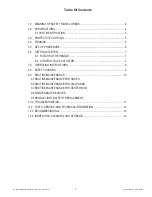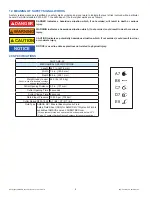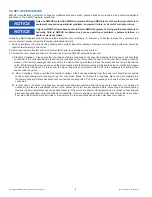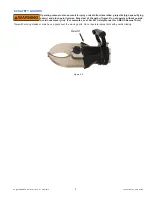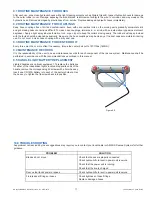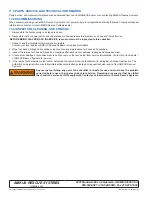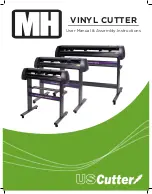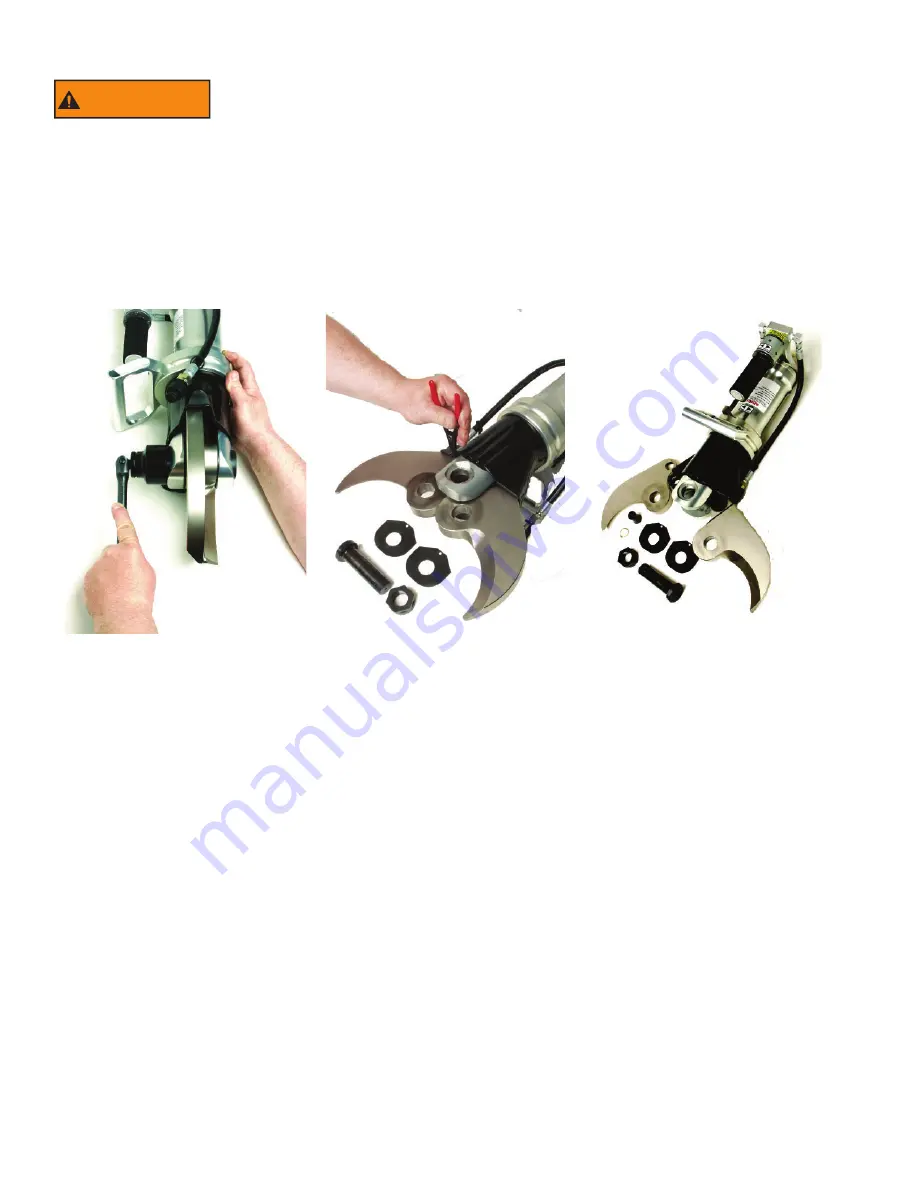
©Copyright AMKUS Rescue Systems, Inc. 2016-2019
LAC-003 May 20, 2019 Rev05
10
9.0 ROUTINE MAINTENANCE
WARNING
Avoid contact with escaping hydraulic fl uid under pressure. If hydraulic fl uid punctures skin, seek
medical treatment immediately. Contact with escaping hydraulic fl uid under pressure could result
in serous injury or death.
Inspect all hose, hose fittings and couplings for leakage and damage (see routine maintenance for hoses and couplings).
Using a torque wrench, tighten the socket head cap screws which hold the control valve to the valve manifold and the valve manifold
to the hydraulic cylinder plug to 180 in/lbs (20.3 Nm). DO NOT OVERTIGHTEN! These screws are installed securely at the factory
but may loosen because of vibration while being transported on moving vehicles.
Approximately once a year, or more often if necessary, remove the cutter blades for cleaning and inspection. Removal of the blades
is most easily accomplished by closing the blades until the retaining rings on the drive link pins are easily accessible.
Loosen the center bolt nut. (Photo 1) After removing the nut, push the center bolt out, being careful not to damage the threads.
Next, remove the retaining ring (Photo 2) from the drive link pin for each blade and push each drive link pin out. Remove the blades
and friction plates from the body (Photo 3).
Photo 1
Photo 2
Photo 3
Clean and inspect each blade, friction plate, drive link pin, and the center bolt for signs of damage or excessive wear. Damaged or
worn parts may need to be replaced. Also, clean inside the body, being sure to remove all grease and dirt.
Lubricate each blade inside the center bolt hole, the drive link pin hole, and on the surfaces where it will contact the other blade, the
friction plate, and the drive link. Use a general purpose white lithium grease such as Lubriplate
®
No. 630-AA.
Position the “ear” of the blade in the drive link. Lubricate and insert the drive link pin through the drive link and the blade. Please
note that the head of the drive link pin should fit into the counterbore in the drive link. Install a
new
retaining ring into the groove of
the drive link pin. Repeat these steps for the remaining blade.
Lubricate the shaft of the center bolt. Insert the friction plate nearest the back of the cutter. Rotate the blade into position and insert
the center bolt through the back half of the body, friction plate, and blade. Insert the remaining friction plate
.
Rotate the remaining
blade into position and push the center bolt in completely. Be careful to line up the shape of the head of the center bolt with the
corresponding shape in the body. Install the hex nut onto the center bolt. Using a torque wrench, tighten the nut to 120 ft/lbs (163
Nm) (Photo 1).



